Entry Database : PDB / ID : 5wr7Title Crystal structure of Trk-A complexed with a selective inhibitor CH7057288 High affinity nerve growth factor receptor Keywords / / / / / Function / homology Function Domain/homology Component
/ / / / / / / / / / / / / / / / / / / / / / / / / / / / / / / / / / / / / / / / / / / / / / / / / / / / / / / / / / / / / / / / / / / / / / / / / / / / / / / / / / / / / / / / / / / / / / / / / / / / / / / / / / / / / / / / / / / / / / / / / / / / / / / / / / / / / / Biological species Homo sapiens (human)Method / / / Resolution : 2.76 Å Authors Tanaka, H. / Blaesse, M. / Augustin, M. / Goesser, C. Journal : Mol. Cancer Ther. / Year : 2018Title : Selective TRK Inhibitor CH7057288 against TRK Fusion-Driven Cancer.Authors : Tanaka, H. / Sase, H. / Tsukaguchi, T. / Hasegawa, M. / Tanimura, H. / Yoshida, M. / Sakata, K. / Fujii, T. / Tachibana, Y. / Takanashi, K. / Higashida, A. / Hasegawa, K. / Ono, Y. / Oikawa, N. / Mio, T. History Deposition Nov 30, 2016 Deposition site / Processing site Revision 1.0 Dec 6, 2017 Provider / Type Revision 1.1 Dec 19, 2018 Group / Database references / Category / citation_authorItem _citation.country / _citation.journal_abbrev ... _citation.country / _citation.journal_abbrev / _citation.journal_id_CSD / _citation.journal_id_ISSN / _citation.journal_volume / _citation.page_first / _citation.page_last / _citation.pdbx_database_id_DOI / _citation.pdbx_database_id_PubMed / _citation.title / _citation.year Revision 1.2 Nov 20, 2024 Group / Database references / Structure summaryCategory chem_comp_atom / chem_comp_bond ... chem_comp_atom / chem_comp_bond / database_2 / pdbx_entry_details / pdbx_modification_feature Item / _database_2.pdbx_database_accession
Show all Show less
 Yorodumi
Yorodumi Open data
Open data Basic information
Basic information Components
Components Keywords
Keywords Function and homology information
Function and homology information Homo sapiens (human)
Homo sapiens (human) X-RAY DIFFRACTION /
X-RAY DIFFRACTION /  SYNCHROTRON /
SYNCHROTRON /  MOLECULAR REPLACEMENT / Resolution: 2.76 Å
MOLECULAR REPLACEMENT / Resolution: 2.76 Å  Authors
Authors Citation
Citation Journal: Mol. Cancer Ther. / Year: 2018
Journal: Mol. Cancer Ther. / Year: 2018 Structure visualization
Structure visualization Molmil
Molmil Jmol/JSmol
Jmol/JSmol Downloads & links
Downloads & links Download
Download 5wr7.cif.gz
5wr7.cif.gz PDBx/mmCIF format
PDBx/mmCIF format pdb5wr7.ent.gz
pdb5wr7.ent.gz PDB format
PDB format 5wr7.json.gz
5wr7.json.gz PDBx/mmJSON format
PDBx/mmJSON format Other downloads
Other downloads 5wr7_validation.pdf.gz
5wr7_validation.pdf.gz wwPDB validaton report
wwPDB validaton report 5wr7_full_validation.pdf.gz
5wr7_full_validation.pdf.gz 5wr7_validation.xml.gz
5wr7_validation.xml.gz 5wr7_validation.cif.gz
5wr7_validation.cif.gz https://data.pdbj.org/pub/pdb/validation_reports/wr/5wr7
https://data.pdbj.org/pub/pdb/validation_reports/wr/5wr7 ftp://data.pdbj.org/pub/pdb/validation_reports/wr/5wr7
ftp://data.pdbj.org/pub/pdb/validation_reports/wr/5wr7 Links
Links Assembly
Assembly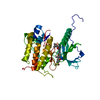
 Components
Components Homo sapiens (human) / Gene: NTRK1, MTC, TRK, TRKA / Production host:
Homo sapiens (human) / Gene: NTRK1, MTC, TRK, TRKA / Production host: 
 X-RAY DIFFRACTION / Number of used crystals: 1
X-RAY DIFFRACTION / Number of used crystals: 1  Sample preparation
Sample preparation SYNCHROTRON / Site:
SYNCHROTRON / Site:  CLSI
CLSI  / Beamline: 08ID-1 / Wavelength: 0.97949 Å
/ Beamline: 08ID-1 / Wavelength: 0.97949 Å Processing
Processing MOLECULAR REPLACEMENT
MOLECULAR REPLACEMENT Movie
Movie Controller
Controller


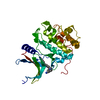
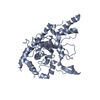
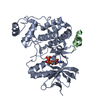
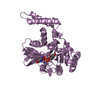

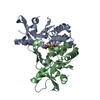




 PDBj
PDBj











